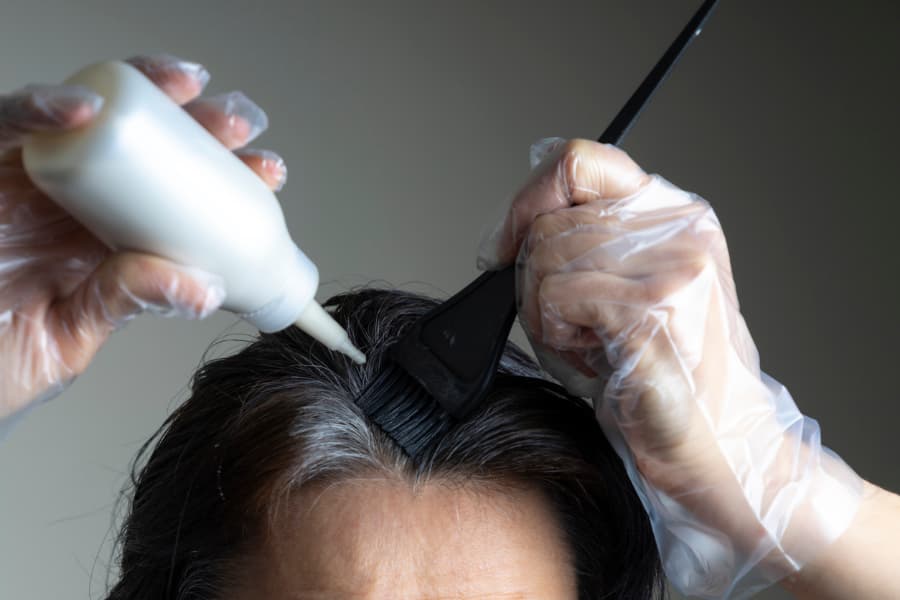Many women in the United States choose to color their hair, either with an at-home dye kit or with the help of a professional colorist at a salon. But is there a link between hair dyes and straighteners and an increased risk of breast cancer? Here, Richmond University Medical Center shares insights from a national study on hair dye and breast cancer risk.
Chemicals In Hair Dye
According to Cleveland Clinic, hair dye can contain more than 5,000 chemicals, including chemical compounds that can cause cancer. These include:
- 2-nitro-4-aminoaniline
- 3-amino-4-methoxyaniline
- 3-nitro-4-hydroxyaniline
These carcinogens can affect the body’s hormone levels and functions, which may increase an individual’s risk of cancer. Chemical straighteners often include formaldehyde, which is a known carcinogen, as well.
Research On Hair Dye And Breast Cancer Risk
National Institute of Health (NIH) collected data from more than 50,000 women in the U.S. and Puerto Rico, from 2003 to 2009, for the Sister Study. This was a longitudinal study that aimed to identify how genetic factors and environment increased an individual’s chances of developing breast cancer. Each of the women included in the study had a sister with breast cancer.
The Sister Study found that women who used permanent hair dye regularly had a slightly increased risk of breast cancer when compared to women who did not. However, when controlling for race, the study found that Black women who use permanent hair dye had a 45% higher breast cancer risk than Caucasian women, who had only a 7% higher risk. There was not a significant increase in breast cancer risk among study participants who used temporary or semi-permanent hair dye. There was, however, an association between the use of chemical straighteners and an increased risk of breast cancer.
The disparity in risk between Caucasian and Black women may be related to the types of chemical dyes and straighteners. The study reports that higher concentrations of endocrine-disrupting compounds are found in hair products marketed to Black women. These endocrine disruptors can lead to the growth of breast tumors.
It is important to note that data in the Sister Study was self-reported by study participants, rather than observed by researchers. This can lead to some bias and inaccuracy in the reporting process. Furthermore, while 25,887 women in the study reported using some form of hair dye, the sample sizes of Black women and Hispanic women within this group were relatively small (1,699 and 1,588, respectively).
Managing Risk Factors For Breast Cancer
Hair dye certainly is not the only risk factor for breast cancer and eliminating use of hair dye does not necessarily mean a patient will not get breast cancer. Other risk factors for breast cancer include:
- Alcohol consumption
- Family history of breast cancer
- No history of pregnancy
- Personal history of breast conditions, such as lobular carcinoma
- Radiation exposure
- Certain gene mutations, such as BRCA1 or BRCA2
Patients should consult with their physicians about breast health and how they can minimize their risk of developing breast cancer. Individuals who want to continue using hair dye but are concerned about exposure to carcinogens can modify their use by:
- Dyeing their hair less often
- Switching from permanent to semi-permanent dye
- Choosing straightening products formulated without formaldehyde
Additionally, all women over the age of 40 should schedule an annual mammogram as part of their breast cancer prevention care.
Get More Information About Breast Cancer Prevention And Treatment
The board-certified team of physicians at the Breast and Women’s Center of Richmond University Medical Center offers comprehensive services for breast cancer prevention and care. Richmond University Medical Center uses the latest medical technology to provide imaging services, screening, and breast cancer treatment, including the following:
- Lumpectomy
- Immediate reconstruction mastectomy
- Nipple-sparing mastectomy
- Oncoplastic lumpectomy and mastectomy
Richmond University Medical Center treats patients on Staten Island, NY, and in the surrounding area. For more information about our breast health services, contact us today.




